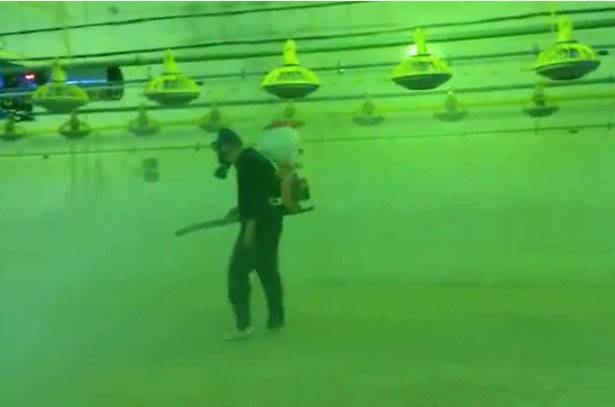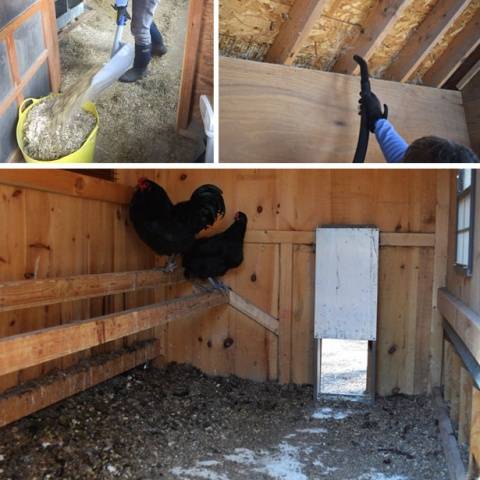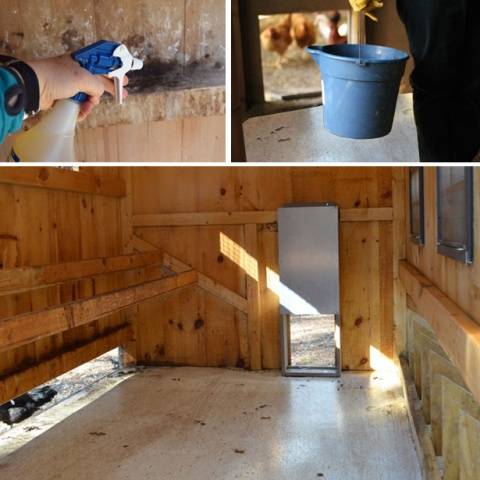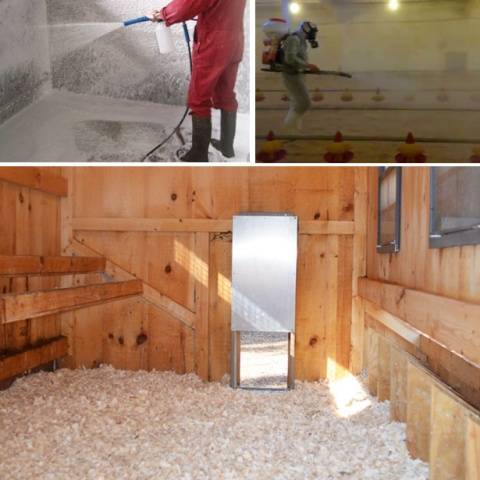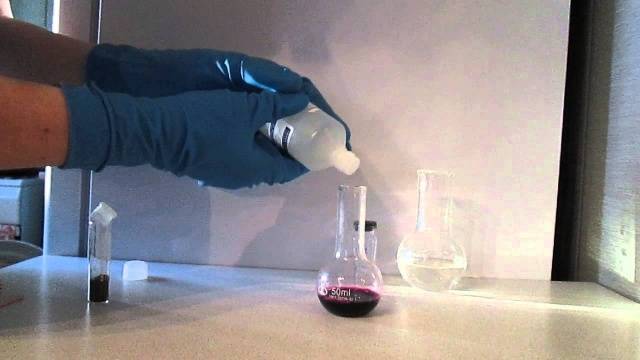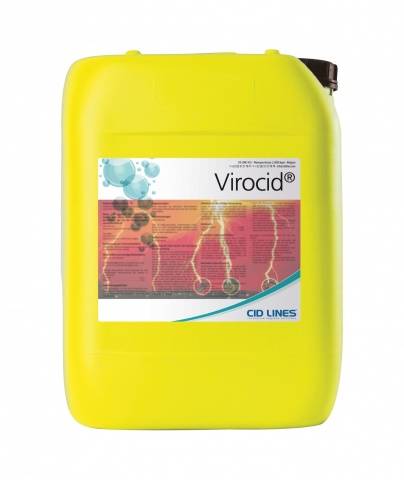Content
Regardless of the number of livestock contained, the chicken coop must be periodically disinfected. This measure is necessary to eliminate and prevent the growth of bacteria that cause disease in poultry. Neglect of sanitation threatens an outbreak of an epidemic. In sick chickens, egg production decreases, weight is lost. Salmonella is a very serious disease. The bird lays contaminated eggs that are dangerous for humans to eat. Treatment poultry house with special preparations helps to avoid such a problem. Disinfection of a chicken coop at home is very simple, and we will talk about this now.
When and how many times you need to disinfect the chicken coop
Let's immediately define what is meant by the word disinfection. This measure includes a certain number of measures aimed at the destruction of pathogenic bacteria. In the process of vital activity of chickens inside the house, the remains of food, old litter, droppings and feathers accumulate. Over time, they begin to rot, creating optimal conditions for the development of microorganisms. Mechanical cleaning is unable to ensure the ideal cleanliness of the chicken coop, therefore, special agents are needed to treat the premises, the use of which is meant by the word disinfection.
The poultry house is disinfected once every two months. Additionally, they carry out perfect cleaning every year. There is such a misconception that to disinfect the chicken coop, it is enough to sanitize the premises once a year. In fact, such works will be in vain, and will not bring positive results. Whatever you treat the house once a year, there is still a threat of an outbreak of dangerous diseases.
Three important steps in rehabilitating a chicken coop
Regardless of which drugs and actions are used during sanitation, there is a strict sequence of actions. They must be observed if you want to 100% clean the chicken coop from harmful microorganisms. Household decontamination involves three important steps:
- Cleaning and washing a chicken coop involves mechanical actions aimed at removing dirt. During this procedure, the chickens are driven out of the building.
- The third stage is disinfection itself. Usually it is performed in the presence of a bird, if drugs that are not capable of harming the health of chickens are used.
So, let's look at each stage of disinfecting the chicken coop separately, and also figure out how to disinfect the chicken coop at home.
Step 1 - cleaning the house
This is the simplest, but at the same time, a very important stage in the disinfection of the chicken coop. Cleaning refers to the mechanical removal of old litter, droppings and other debris from chickens. A big mind is unnecessary here, it is enough to take scrapers, a shovel, a broom, and clean the room of dirt.
The entire coop should be cleaned, especially the perches, nests and floor. The poles where the chickens sit can be brushed over the metal. If the chickens were fed from wooden feeders, they must be thoroughly cleaned of food debris. It is important to take into account that disinfectants are powerless in an area not cleaned of dirt.They will not cope with bacteria, and all the work will be pointless.
Stage 2 - cleaning the house
After mechanical cleaning of the chicken coop, a lot of dirt still remains. The droppings are strongly absorbed into the wooden elements of the coop and should be washed. The entire interior of the house falls under this stage of processing. Especially carefully you need to wash the walls, floor, as well as the most frequent places of stay of the chicken, that is, the perch and nest.
The chicken coop is washed with warm water with the addition of disinfectants specially designed for this purpose.
It should be borne in mind that preparations specially designed for washing the chicken coop contain disinfecting substances. Often they supplement the means used in the third stage of disinfection - disinfection. From folk remedies during washing, it is allowed to add apple cider vinegar to the water, while adhering to a ratio of 3: 2.
Stage 3 - disinfection
The third stage is the main one when performing disinfection of the chicken coop. Many poultry farmers believe that it is enough to disinfect the chicken coop with apple cider vinegar. In fact, this folk remedy is more suitable for washing, and vinegar is unable to kill pathogens. The coop will be completely clean, but not protected from further development of parasites.
The most common, effective, but dangerous disinfectant for treating chicken coops is formalin. Improper use of the solution can harm chickens. However, formalin is considered to be the most powerful agent capable of killing all bacteria. The disinfectant solution is sprayed throughout the house without the presence of chickens. You only need to work in a protective suit and a gas mask. Formalin contact with human skin is harmful, and even more dangerous is its penetration into the respiratory tract. The substance has a bad, pronounced odor. In many countries, the use of formalin is prohibited.
All poultry houses and livestock farms in the post-Soviet space were treated with bleach. The white powder is no less dangerous than formalin, and also mercilessly kills all bacteria. The substance has an unpleasant odor. May cause burns if inhaled. During disinfection, the entire chicken coop is treated with bleach, and some of the powder is also left on the floor. The fact is that the substance is unable to destroy all bacteria in one day, and the chickens will have to live for some time inside a barn with chlorine.
There are many popular recipes used to disinfect a chicken coop. One is mixing five parts of hydrochloric acid with one part of manganese. The container with the solution is left for 30 minutes inside an empty chicken coop. During the reaction of the two substances, vapors are released that kill harmful microorganisms. At the end of disinfection, the house is ventilated, after which the chickens can be launched.
Iodine is often used in folk recipes for disinfecting the poultry house. To prepare the solution, take 10 g of the substance, add 1.5 ml of water, plus 1 g of aluminum dust. This proportion is designed for 2 m3 chicken coop. The bacteria are killed by the resulting reaction. During disinfection, chickens may not be expelled from the house, but at the end of the treatment, the room is well ventilated.
The most reliable and safe are store-bought preparations for disinfecting chicken coops. They contain a complex of components that have a wide range of effects on various microorganisms. Store drugs are certified. After using them inside the poultry house, it is guaranteed that no epidemic breaks out for 2-3 months. One of these drugs is "Virocid". The solution is sprayed over the house in the presence of chickens.It does not need to be washed off afterwards, since the substance is completely harmless.
The video shows an example of processing a poultry house:
Air purification - as an effective means of disinfecting a chicken coop
Microbes live not only on the surface of objects, but also in the air. To get rid of them, they disinfect the chicken coop with smoke bombs or irrigation. For efficiency, each procedure lasts 3 days, and it is carried out once a month.
We offer for review several methods of air purification, in which chickens can not be driven out of the poultry house:
- Containers are placed inside the chicken coop. The number depends on the size of the house. Twenty parts of iodine monochloride and one part of aluminum wire are placed in each container. From the reaction that occurs, smoke is released, cleansing the air from parasites. For 1 m3 poultry house requires 15 ml of iodine.
- A similar reaction occurs when mixing 20 g of bleach with 0.2 ml of turpentine. This ratio is calculated for 1 m3 poultry house.
- The iodine-containing preparation "Monclavit" does an excellent job of disinfecting the air inside the chicken coop. Requires 3 ml of substance per 1 m3 premises.
- The preparation "Ecocid" at a concentration of 0.5% is used for irrigation, during which fog is formed inside the house. For disinfection, use 30 ml of solution per 1 m3 chicken coop.
- The drug "Dixam", produced in the form of a tablet, fights well against the fungus. After it is ignited, iodine-containing vapor is released, which additionally heals the pulmonary chicken diseases... One tablet is designed for disinfection 200 m3 poultry house.
- Iodine checkers under the name "Cliodeziv" have proved to be excellent. They emit disinfectant smoke that is harmless to chickens.
All considered preparations for air disinfection are used in the presence of chickens, after which a thorough ventilation of the house is performed.
Sulfur smoke bombs for disinfection
Now in many stores there are sulfuric smoke bombs intended for disinfection of premises. The principle of their application is simple: the packaging is removed from the smoke bomb, the wick is inserted and set on fire. The acrid smoke emitted kills all microbes, and even small rodents. An important requirement is 100% tightness of the room, after which it must be thoroughly ventilated. The completely sulfurous smell disappears after a week.
Although poultry farmers are happy to use cheap sulfur bombs, they are ineffective for a chicken coop. The product is intended for disinfection of basements and cellars. The smoke destroys fungus, harmful insects, but not infectious agents.
The video tells about the disinfection of the chicken coop:
You can disinfect a home chicken coop yourself or call the appropriate services. How best to act is up to the owner himself. Calling specialists will cost at least 2 thousand rubles. If you want to save money and do everything yourself, it is better to use store-bought preparations for disinfecting poultry houses. Many of them are sold in large packs and are inexpensive, so they will last for multiple uses.
